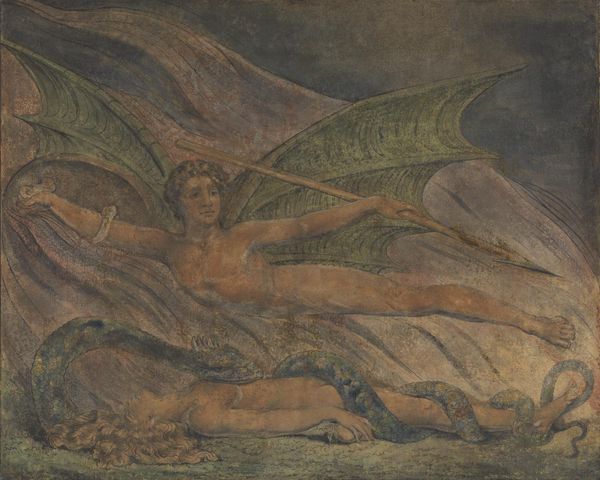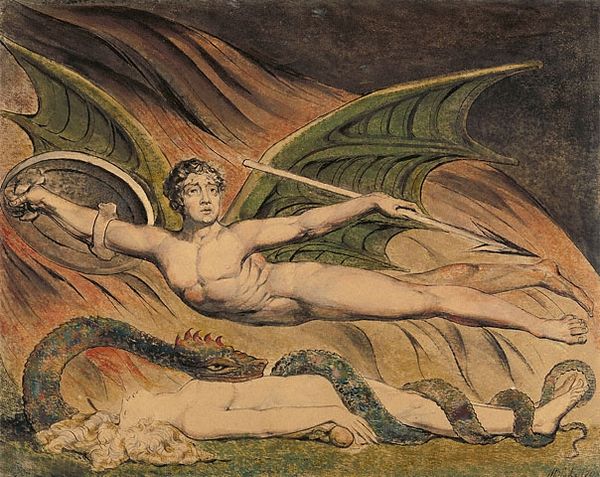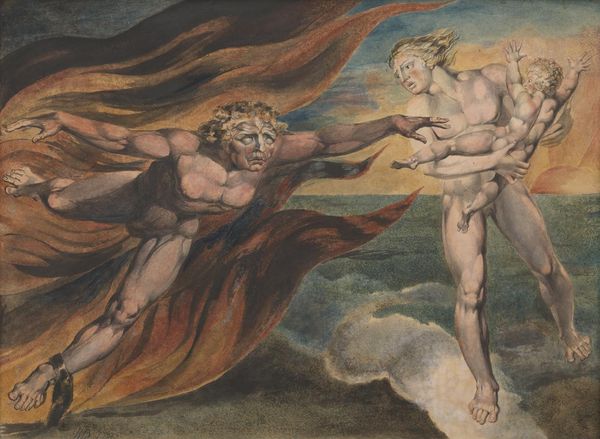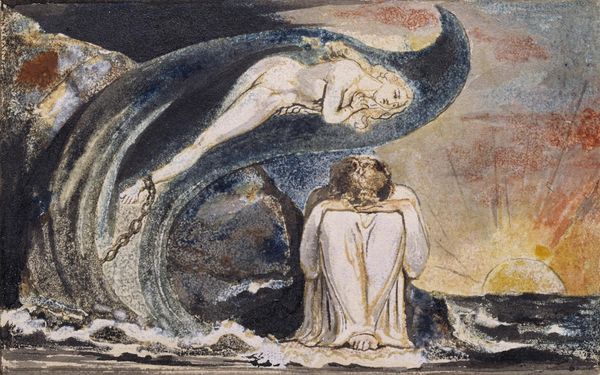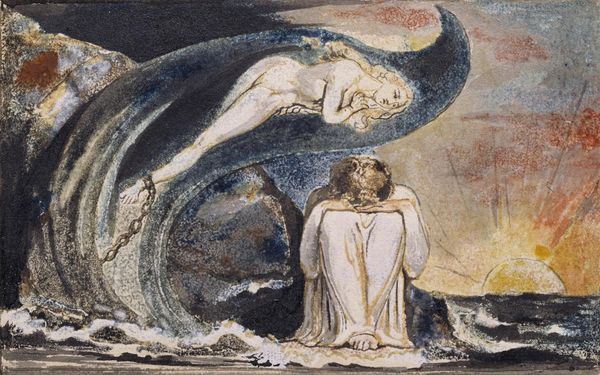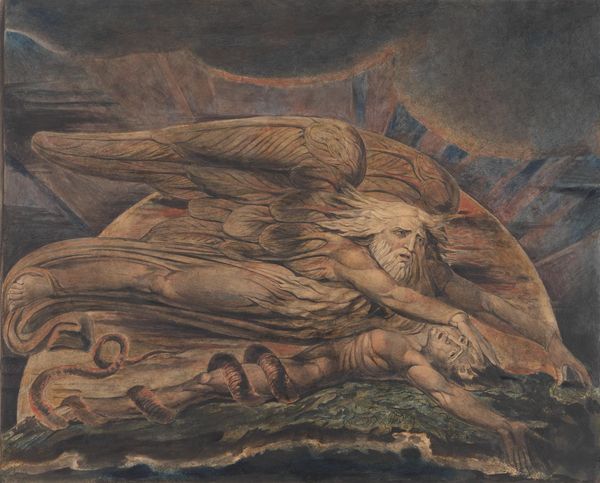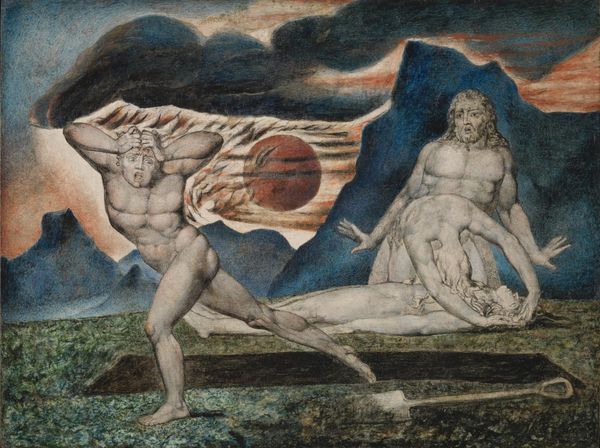
Dimensions: unconfirmed: 432 x 534 mm
Copyright: CC-BY-NC-ND 4.0 DEED, Photo: Tate
Curator: Here we have William Blake's "Satan Exulting over Eve" from the Tate Collections. It's a watercolor execution, existing at 432 by 534 millimeters. Editor: It has a kind of washed-out, almost tactile feel. I'm curious about what kind of paper or support Blake used, it looks so raw. Curator: Blake’s handling of light and shadow here is quite striking. Notice how he uses line to delineate Satan’s figure, emphasizing the musculature and power. The serpentine form mirrors Eve’s fallen state, visually underscoring her corruption. Editor: Considering Blake's interest in alternative printmaking and his focus on process, one has to wonder about the accessibility of these materials, and how that affected his final product. I wonder where he sourced his paper and pigments? Curator: Perhaps. Ultimately, it's a powerful depiction of moral corruption, rendered through Blake's unique symbolism and artistic vision. Editor: Absolutely. The more I consider it, the more I see this work as a testament to the constraints and possibilities inherent in Blake's chosen means of production.
Comments
tate 6 months ago
⋮
http://www.tate.org.uk/art/artworks/blake-satan-exulting-over-eve-t07213
Join the conversation
Join millions of artists and users on Artera today and experience the ultimate creative platform.
tate 6 months ago
⋮
Blake’s Satan bears none of the marks of depravity or bestiality that one might expect. Many 18th-century artists were heavily influenced by Milton’s Paradise Lost in which Satan appears as a sublimely heroic figure. In Blake’s picture, Satan’s evil nature may be seen to be distilled in the form of the snake. Lavater derived his reading of this creature from conventional Christian philosophy, but based his description on the paradoxical notion of the snake’s lack of form. ‘What has less, yet more physiognomy, than the serpent?’, he asks. ‘Can we not perceive in it tokens of cunning and treachery?’ Gallery label, March 2011
